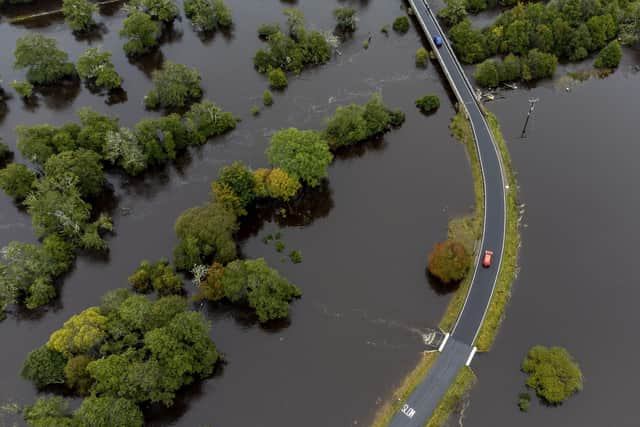Weather Scotland: Rain and 'Arctic' blast forecast to hit Scotland this weekend
A cold and dry spell is set to continue before temperatures plunge further at the weekend, bringing risks of wintry hazards to northern parts of the UK.
The mercury dropped to minus 11.1C at Aviemore in Scotland overnight on Tuesday, which ranks as the ninth coldest night this winter so far, according to the Met Office. The forecasting body said a “more northerly wind” and “Arctic influence” is expected to descend over the UK on Sunday, dragging temperatures down.
Advertisement
Hide AdAdvertisement
Hide AdThere is a chance of conditions becoming slightly milder by the middle to end of next week.


Much of the UK will remain cool and dry for the rest of the week, with daytime maximum temperatures set to remain in the low single figures in the south, according to the Met Office.
Thursday is likely to kick off windy and frosty in the south before the frost risk flips on Friday with more chance of it in the north, but both days should stay largely dry.
A band of rain is expected to move over northern Scotland late on Friday before it makes its way southward on Saturday, turning into “drizzly rain or cloud” for some.
Met Office spokesperson Stephen Dixon said: “From Sunday, however, is where we can see a bit of another change in the weather and turning things cooler again. It’s turning to more of a northerly regime, so we’re starting to see more a northerly wind and more an Arctic influence over the UK’s weather which increases the risk of wintry hazards to the north initially in particular.
“So by the time you get to Sunday there’s a chance of snow showers in northern areas, particularly near the coast, it’s something we’re keeping an eye on at the moment.”
He said the Met Office would keep watch of the colder temperatures and the potential risk of ice, with the “possibility of some Met Office warnings needing to be issued”.
Mr Dixon said: “By the middle and end of next week there’s a chance, as warmer air moves in from the south west, of some snow further south, but at this range it’s not possible to pick out anything in terms of detail as to extent or likelihood of that one.”
Advertisement
Hide AdAdvertisement
Hide AdHe said warmer air from the Atlantic coming in from the south west may produce a snow risk when it meets the cold air in situ over the UK.
Mr Dixon went on: “Temperatures would rise in behind that slightly – I mean rise in inverted commas as it’s still in winter – but it would be relatively milder air in behind that.” The lowest daily minimum temperature of this winter so far is -12.5C, recorded at Altnaharra on December 3.
An amber cold health alert for the north west of England, the Midlands, the south west of England and the south east of England is in place until noon on Friday.
The amber alert, issued by the UK Health Security Agency (UKHSA), means “cold weather impacts are likely to be felt across the whole health service for an extended period of time”.
The number of flood warnings in force for England is gradually decreasing following last week’s Storm Henk deluge, with 98 remaining in place as of Wednesday afternoon. There are also 116 flood alerts in effect highlighting where flooding is possible.
People living in Lightlands Lane in Cookham, Berkshire, have suffered from sewer flooding, according to Thames Water. The water firm apologised to residents and said: “Unfortunately, flood defences next to Lightlands Lane Sewage Pumping Station were overwhelmed following recent heavy rainfall.
“This caused the site to flood, affecting our ability to pump sewage away from nearby properties. Our engineers will continue to carry out necessary repairs where it is safe to do so.”
Thames Water said it was using tankers to remove excess sewage to reduce the risk of further flooding and to ensure customers can continue to use their facilities at home.
Comments
Want to join the conversation? Please or to comment on this article.